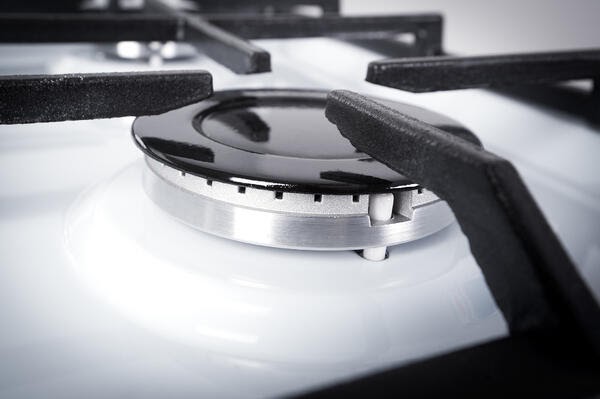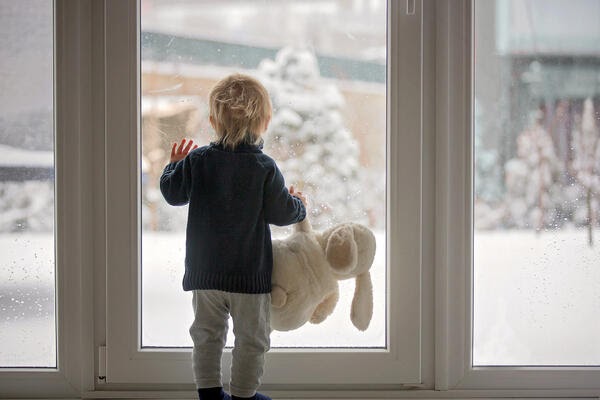When people think of air quality, they usually think of the air outdoors but the air inside can also become very polluted – especially during the warmer months. Things like dust and allergens, mold, chemicals used in conventional cleaners, and more can compromise indoor air quality. Luckily, there are steps you can take to improve indoor air quality in your home this summer!
1. Use a Dehumidifier
Pests and allergens thrive in the humidity. Dust mites, in particular, are a common trigger for allergies and asthma, and they love the humidity. However, most dust mites die off in low humidity environments. Keeping humidity around 30%-50% will help keep this under control. Although humidity in the Midwest region isn’t nearly as high as it is in places like Florida, humidity is still definitely present!
A dehumidifier removes moisture from the air and creates an environment that prevents dust mites and pests from shacking up in your home this summer.
2. Switch to a High-Quality Air Filter
If you went through our Spring Air Conditioner Maintenance Checklist and found that your filter was looking pretty dirty, you likely need to replace it. There are tons of air filters on the market but some perform better than others.
To tell how effective an air filter is, you will need to look at the Minimum Efficiency Reporting Value (MERV). MERV was developed by the American Society of Heating, Refrigeration and Air Conditioner Engineers – ASHRAE and values vary from 1 to 16. The higher the MERV value is, the more efficient the filter will be in trapping airborne particles.
At Althoff, we recommend the high-quality filter and cabinet from Aprilaire. Based on the needs of our customer, our typical installation is either MERV 11 or MERV 13.
To learn more about the Aprilaire air filters, visit our indoor air quality page!
3. Groom Your Pets Regularly
We love our pets but they can create a lot of issues when it comes to indoor air quality. Pet dander is harmful to those who are allergic, but pets can also bring a whole host of other things into your home from the outdoors.
Regularly grooming your pets removes extra fur, dust, dirt, and other debris that can affect indoor air quality. We suggest brushing their fur and bathing them outside if possible or taking them to a professional groomer.
4. Avoid Synthetic Fragrances and Remove Odors
Synthetic fragrances in things like laundry products, cleaners, and air fresheners emit a lot of chemicals into the air. Although they may make your home smell clean, they are compromising the air quality. Fragranced products are not required to say exactly what makes the fragrance and can contain VOCs.
In addition, you may not be sensitive to heavily fragranced home products but visitors or pets might be.
Use products that are fragrance-free or naturally fragranced. You can also install an odor remover and air purification device like the Air Scrubber by Aerus. This device is installed in the ductwork of the central AC and uses a combination of UV-C light and activated carbon to reduce odor-causing
VOCs.
To learn more about the Air Scrubber by Aerus, visit our indoor air quality page!
5. Purchase Air Purifying Plants
Indoor plants are a wonderful addition to any home and some can actually help clean the air. Although not quite as effective as man-made air purifiers, they work well in conjunction with effective purification systems.
NASA recommended air purification plants:
- Snake plant
- Money plant
- Chinese evergreen
- Spider plant
- Aloe vera
- Dragon tree
6. Install a Robust Air Purifier
All of the above are great ways to improve indoor air quality but if you really want clean air in your home, you should consider investing in an air purifier like the Abatement Technologies HEPA Residential Air Purifier.
The Abatement Technologies HEPA Residential Air Purifier converts home’s HVAC System into a Hospital-Grade HEPA Filtration System. The system removes at least 99.97% of microscopic airborne particles and pushes the air through multiple filtration cycles. Multiple filtration cycles means that the system catches tiny particles that lower-quality purifiers and most filters miss.
This type of high-quality HVAC purification system also offers germicidal UV (UVGI) lamp technology irradiates and helps control mold spores and bacteria.
With an air purifier like this one, you will want to hire an expert to install it correctly to ensure that the air in your home is as clean as can be!
To learn more about the Abatement Technologies HEPA Residential Air Purifier, visit our indoor air quality page!
In recent decades, many are spending significantly more time inside and that means we all should be mindful of the air quality in our homes.
If you are interested in learning more about the indoor air quality systems and installation, click here! If you are ready to invest in the air quality of your home, you can request a quote from our experts at Althoff Industries or give us a call at 815-455-7000 for more information.







